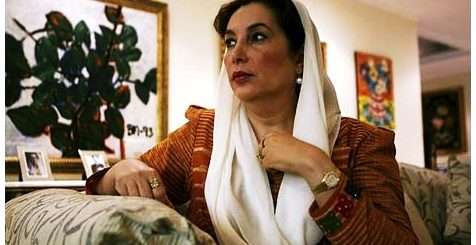A conversation with the Kashmiri poet Agha Shahid Ali
Calligraphy of Coils by Rehan Ansari and Rajinderpal S. Pal – A Conversation with the Kashmiri poet Agha Shahid Ali.
If, as Edward Said says in Representations of the Intellectual, “…for most exiles the difficulty consists not simply in being forced to live away from home, but rather, given today’s world, in living with the many reminders that you are in exile, that your home is not in fact so far away, and that constant but tantalising and unfulfilled touch with the old place,” then perhaps Agha Shahid Ali exemplifies that condition very well.
A Kashmiri poet who now lives in the US teaching creative writing at the University of Massachusetts, Shahid has become a well-known figure in the Anglo-Indian literary scene.
Besides his collections of poetry (Bone Sculpture, In Memory of Begum Akhtar and Other Poems, A Walk Through the Yellow Pages and A Nostalgist’s Map of America), he is also a translator of Faiz Ahmed Faiz (The Rebel’s Silhouette: Selected Poems of Faiz Ahmed Faiz).
Agha Shahid Ali’s latest book of poetry, The Country Without a Post Office, was released in early 1997. (Two selections from this book, “The Blesséd Word: A Prologue” and “The Last Saffron” were printed in the November/December 1996 issue of Himal.) The title refers to the fact that for about seven months in 1990, no mail was delivered within Kashmir owing to political turmoil. From his house, a friend of Shahid’s father could see the mountains of undelivered mail stacked in the open at the main post office. One day, he strolled over to one of those large piles and casually picked up a letter. It was addressed to him from Shahid’s father. This incident became the motif of the book. Here, in a conversation with Rehan Ansari and Rajinderpal S. Pal, Shahid provides insights into his work by commenting on lines from his poetry.
“Someone wants me to live!
A language will die with me.”
This is from the central section of A Nostalgist’s Map of America, which deals with the death of a friend of mine from AIDS. He was an undergraduate at Penn State when I was a graduate student, and we were very good friends. The last time I had seen him was 1979, he had graduated and left. Out of the blue, in 1985, I got a call from him in Tucson. I don’t know whether he discovered my number or I had written a note to him, I don’t remember the details. He told me that he and his lover were moving from Boston to California and they would be driving through Tucson and would like to come and see me, which they did. Six months later he called me and said, “Shahid I have to tell you something”. I said “don’t”. I knew he had called to tell me he had AIDS. It had quite an effect on me that someone who had become a part of the ghostly patterns of the past suddenly came back into my life and died more vividly. And of course died of this horrible disease. I’m rambling.
This section of the book had the title poem and then a string of poems of different forms and manners. When I was putting that section together, the death of this friend combined these poems that had nothing to do with him. I had a whole set of independent and relatively lyrical poems out and I was creating a loose narrative, not exactly linear, of this drive leaving Pennsylvania combined with my friend’s death and the whole idea of memory. I removed the titles of these poems and numbered them, and then wrote some intervening poems that gave them an overarching kind of feel.
That brings me back to the [above] lines. I had once read in the newspaper about the death of an 80-year-old gentleman, the only surviving person who spoke a language called Oubykh (a Turkic language). That [fact] stayed with me a long time. Agha is a Turkish name and my ancestor from my father’s side came across the mountains to Kashmir as a trader nine generations ago. I saw a connection between the newspaper story and my ancestry… The mythic terrain of the book is not the actual historian’s terrain. The superstitious mountains of Arizona are not the Karakoram Range or the Hindu Kush mountains but there are so many similarities in mythic structures across the world. This one voice comes into the poem and says, “I’m the last speaker of this language”, and I’ve placed him in the US Southwest. This cry to be remembered and the language to be remembered, seen in terms of my friend’s death, acquired other dimensions. Edward Said talks about a contrapuntal rhetoric, which means you read something with several things happening simultaneously. It’s not just the death of a friend, a simple elegy, but the death of tribes, the death of landscapes and the death of a language. All these things happen simultaneously to create a density. …And, of course, a universe dies with every person’s death.
“The earth is a calligraphy of coils”
In the third section of A Nostalgist’s Map of America, I wanted to enlarge the symbol and motif of the desert by having the story of Laila and Majnoon, one of the great love legends of the world. It goes back to pre-Islamic Arabia. Majnoon’s madness is celebrated because it is ecstatic and his longing for this woman Laila is a model of commitment.
Also I did that section because critics, interviewers and newspaper writers always want to put you into a slot: you are an Indian writing in English, therefore, you should write about India, Kashmir, Pakistan or whatever. The point is you are a universe, you are the product of immense historical forces. There is the Muslim in me, there is the Hindu in me, there is the Western in me. It is there because I have grown up in three cultures and various permutations of those cultures.
In one way Arabic culture, Persian culture and Urdu culture are available to me. So I put that section there, dealing with Laila and Majnoon, to enhance the idea of the desert and give it more texture. Within that tradition is the whole tradition of miniature painting. I saw a painting of Majnoon’s father in the wilderness, where he is consoling his son. And then I’ve seen other miniatures. Those images, combined with the reading of the memoirs of Jahangir, recall certain shapes and intricate designs. He talks about seeing, in a jungle, a fight between a spider and a cobra, and the spider kills the cobra by sitting on the head of the cobra and digging its legs in. Thus the calligraphy of coils.
“Generations of snowmen on my back.”
I approached the poem “Snowmen”, from which these lines are taken as an immediate sensuous apprehension. It was later that I thought of its feminist implications. There are two things hidden in that poem. One is a poem by Wallace Stevens called “The Snowmen”. If you read it you won’t see the connection but it is there for me. The other is a scene that has haunted me for a long time from Wuthering Heights. The narrator is staying at Heathcliff’s house because there has been a terrible storm and the ghost of Katherine knocks on the window. She says, “I’m cold. Let me in”. He opens the window and the glass breaks somehow. He takes the hand of the ghost and rubs it against the glass and there is blood. It’s an amazing scene. Talk about magical realism. People think about that novel and they want neat answers. [Bronte’s] whole enterprise is that there are no neat answers. But to provide you with a neat answer: I’m thinking about my ancestry and the lost women in this ancestry who we never hear about. I know everything about my father, his father, his father’s father and so on for nine generations. But I know nothing before my grandmother. So I’m trying to find these lost women. These are difficult questions, there are no neat answers. You can have a feminist construct when you read that poem.
“Once again my hands are empty
I am waiting alone at Purana Qila”.
The emptiness of hands can refer, of course, to the empty hands of a lover, so you have the love idea. An empty hand is also a hand that has no money. At the end of the poem the narrator has nothing. The poem moves through a series of losses. He [the narrator] runs into an old friend at a bus station and he has no money for the bus, and there is a policeman who says, “Where is your ticket? You are being illegal”. There is an incident from my life behind this story. In New Delhi there were a lot of inspections going on because many people were getting on and off buses without paying. One day I was on the bus and a friend of mine said, “Shahid don’t buy a ticket I’ll buy your ticket”. When I stepped off the bus this inspector demanded to see the ticket. We checked with my friend. He had not bought my ticket yet. They took me to a police van nearby. I was very upset because I have never cheated in this regard. I’ve cheated in other regards but never this. That is also somewhere [in this poem]. You know all these things affect you. But that’s neither here nor there because in the end you want the poem to survive on its own merits on the page. At the end of the poem the narrator has lost his friend again, he is without money and the empty hands are a symbol of sheer helplessness. The ultimate irony is that the beggar women with their children are giving him money. They are pitying him.
“Each ray of sunshine is seven minutes old
so when I look at the sky I see the Past?”
I was in New York City and a friend of mine, a Physics student from Belgium, mentioned the fact that each ray of sunshine is seven minutes old. He also said that being a poet is a bit like being a parasite, you’re always listening and gathering things. It was such a fascinating concept. I said: “Do you mean I’m always looking into the past?” That led me to this poem, “Snow on the Desert”.
It has many things going on in it: the Arizona landscape, the departure of my sister by air, and the sight of the morning. It having snowed in Tucson the night of the departure, all the desert covered in snow was very eerie and strange and beautiful. There is a kind of ecological concern in that poem: the death of oceans, the death of tribes, as well as other concerns: the departure of my sister, the death of the singer Begum Akhtar. Long ago in Delhi, I heard Begum Akhtar very often. In one particular case there was a power failure. The lights went out and there was absolute silence. The microphone was also dead. It was an outdoor concert and for a minute or two the voice was coming from very far away, an echo. And in that echo I heard, with such clarity, something amazing that she used to do with her voice. Just haunting.
When I saw the snow I was driving in the fog and then, suddenly, I was in this blinding sunlight. After I dropped off [my sister at the airport] I came right back and was again in that fog. It was a fog that was very neatly dividing the city. That’s why the line, “the sliding doors of the fog”. That moment was so unique. [In writing a poem] there is always the question of metaphor and simile, so what could I compare [this moment] to? I thought that it could only be compared to another [incomparable] moment. Two moments juxtaposed to show that neither can be compared to the other or anything else. But that juxtaposition creates a kind of translation, a kind of a crossover. The moment of Begum Akhtar’s had stayed with me for over 10 years, and it was so many years later that I found the right moment to introduce it into a poem.
“A city being brought to memory by the rain”
Rain has had a profound impact on me, as I’m sure it has had on many people. My mother is from Lucknow. Kashmir, as one of my poems says, has four clearly defined seasons. They truly have a three months’ winter, a three-month spring, summer and autumn. On the first of September you can really sense a nip in the air. You can start to see the elements of change, that autumn is coming. I had heard a lot of classical ragas that revolve around the monsoons. When I would hear these ragas and my mother would talk about the monsoons, and the romance of it, I had no way of knowing what that was about. That the rain [could be] such a positive feature, that people long for the rain to cool the atmosphere, and that that’s the season lovers can’t bear separation. Also this incredible music, these ragas that deal with the monsoons.
We have rain in Kashmir, which sometimes leads to floods, but it does not have quite the same feeling as rain in Delhi has. When I went to Delhi for the first time in summer, in July, and I saw these rains, I [saw] a very romantic season and could see why you would want to be in the arms of your lover. Then when I went to Arizona there was this flood. I arrived and there was rain for two weeks. It was unusual in the desert and they called it monsoons. There were some deaths that occurred during that time. When I was putting this book together, I had this image of three women. I had this painting someone had given me which had these three women of the desert holding chili peppers. The idea of three women, three sisters, seems so central to various myths. Strangely enough I haven’t found it in Hindu myth. You have it in Greek, in Scandinavian myth, you have it in Chekhov and Shakespeare and so on.
The concept of the trinity occurs in so many cultures. Rushdie’s Shame has it, but he surely got it from Western myth. He Pakistanised or Indianised it. The three sisters, when asked “Who’s my father?” by the child they have raised, assume the shape of the three monkeys: see no evil, speak no evil, and hear no evil. Wonderfully funny stuff. At a personal level the rain brings so much memory back to me, especially of some very important love relationships I have had. The rain is also very important culturally, mythically, anthropologically, ecologically. It is the rain that brings a city back to memory, and makes it memorable, and these three women are the preservers of memory.
The lines above are taken, in that order, from the following poems:
1. “In Search of Evanescence” (A Nostalgist’s Map of America, W.W. Norton Company, New York, 1991)
2. “From Another Desert” ANMA
3. “Snowmen” (The Half-Inch Himalayas, Weslyan University Press, Hanover, 1987)
4. “I Dream It’s Afternoon When I Return to Delhi” THIH
5. “Snow on the Desert” ANMA
6. “Desert Landscape” ANMAA
Rehan Ansari is a scholar with the Centre for the Study of Developing Societies in Delhi, working on a project on Partition and Memory in Lahore. Rajinder S. Paul works for a literary magazine published in Calgary, Canada.














